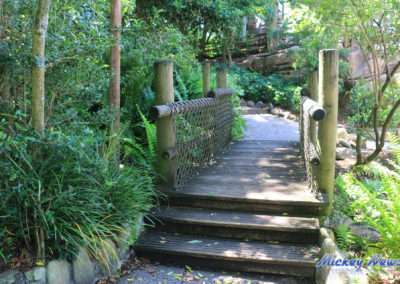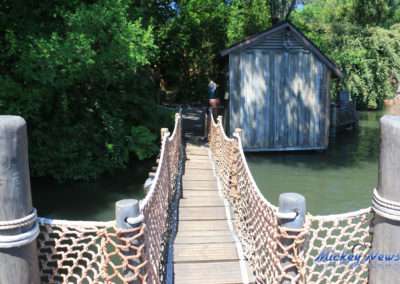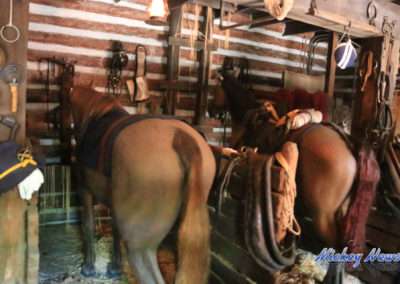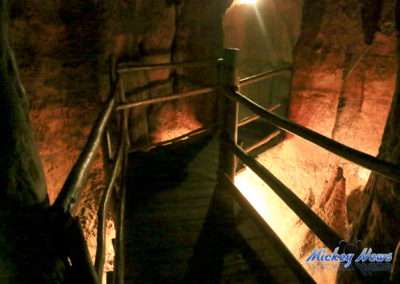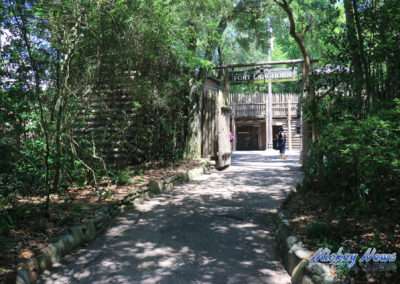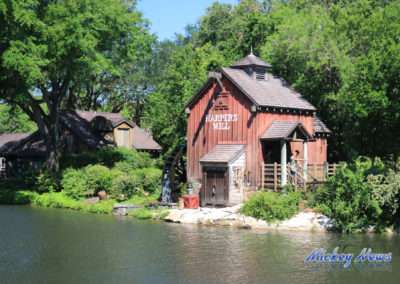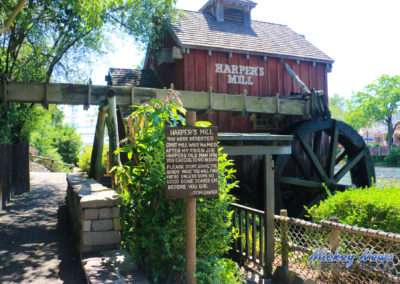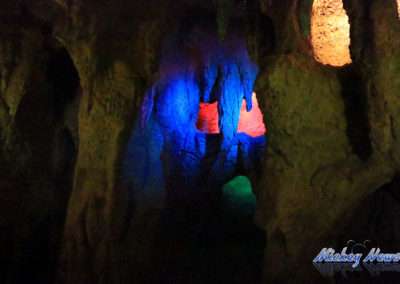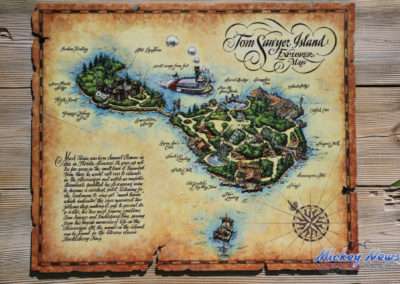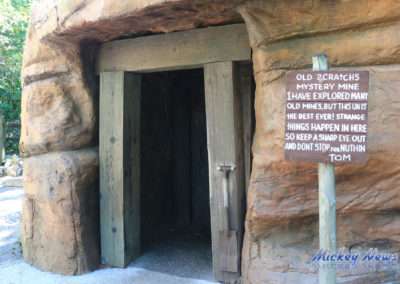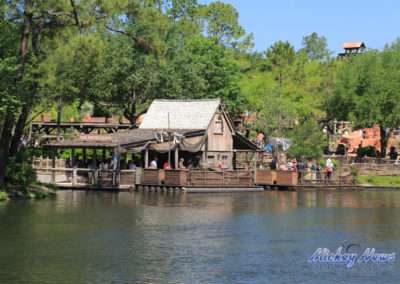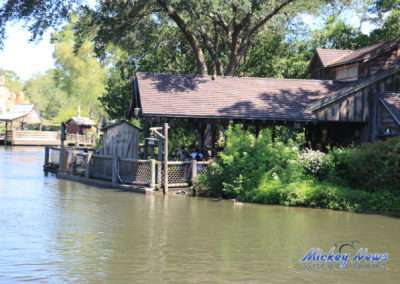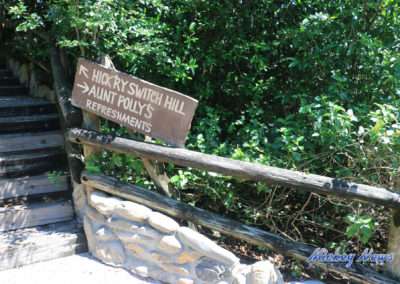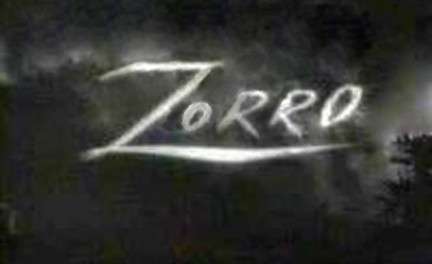The technology today borders on the astounding. Even by the standards of just 10 years ago, we have advanced leaps and bounds, and there appears no end in sight. Walt would have fit right in today’s high-tech world. But with this technology, we seem to have lost our communication and social skills so to speak. Want proof? Just look around; at any function. Weddings, sports events, restaurants, coffee shops, etc. Everyone, all ages seem to have their beaks buried in their electronic devices. The art of conversation has gone by the wayside. Even the Disney parks bristle with high-technology. Space Mountain, the new Star Tours attraction, the upcoming Soarn’ rehab, the way the fireworks are synchronized with the music, almost everything is high tech.
This brings us to an attraction called Tom Sawyer Island. This attraction which has virtually remained unchanged since its opening on May 20th, 1973, remains an anachronism. Nowhere in any of the Disney parks can you find anything as low-tech as this offering. In fact the only high-tech you will experience is the diesel engine in the rafts that take you to the island. But remember, the Island was conceived by imagination and requires imagination to enjoy what it offers…
As you might have guessed, Tom Sawyer Island is a recreation of the famous book by one of the Nineteenth century’s most famous author, Samuel Langhorne Clemens, better known as Mark Twain. Penned in the era before our high-tech world, it was a window into the adventures of Tom Sawyer, Becky Thatcher, Huckleberry Finn and friends. In those days, you used your imagination, not video games to envision exciting tales of pirates, exploring caves, and rafting adventures. Twain’s book actually drew upon his youth growing up in Hannibal Missouri; Tom was Mark Twain as a child. Huckleberry Finn was based on his boyhood friend Tom Blankenship and schoolmates Will Bowen and John Briggs. And Tom Sawyer Island requires a healthy imagination.
The story behind the Island is typical Disney. And it is the one part of Disneyland that came straight from Walt’s own mind. Walt had always wanted an island in the middle of the Rivers of America, but was unsure of just what the island would be. He had once contemplated naming the island “Treasure Island” after his 1950 live-action film (Disney’s first completely live-action film) film of the same name. Walt saw the island as a home for pirates. In an interview with Readers’ Digest in 1960, Walt explained…”I put in all the things I wanted to do as a kid…and couldn’t,” “Including getting into something without a ticket” Walt also gave thought to making it “Mickey Mouse Island” as a home base for the Mickey Mouse Club and the Mouseketeers. He also considered making the Island a showcase for miniature reproductions of historic landmarks such as Independence Hall, Mount Vernon and Monticello which could be viewed from the Mark Twain paddle wheeler.
But the final design was Tom Sawyer Island, and it was built especially for kids. It was Walt’s favorite place in the park, and meant to be “Fun and Fancy Free”. During the planning stages of the island, it was Marc Davis who was tasked with the map details of Tom Sawyer Island. It was the same Marc Davis who labored over countless map contours for Disneyland Park, which opened in 1955. Peter Ellenshaw did the artwork for the map of Disneyland that Walt used on his television show to advertise the new park and artist Herb Ryman likewise the art on the original map of Disneyland. However, Marc Davis tried in vain to come up with a viable map of Tom Sawyer Island, but Walt was never pleased with the designs.
Davis recalls that Walt finally said…”Give me that thing!” He took the idea and worked on it in his workshop until he came up with what he wanted. The next day he placed his plans on Marc’s desk and said…”Now that’s the way it should be”. So the island’s shapes and contours was all Walt’s idea and the Pirates Cove on the Island was again, Walt’s. Other contributors to flesh out Walt’s design was Bill Evens who handled the landscaping, Disney map expert and artist Sam Mckim did the finishing renderings on the Tree House, Fort Wilderness and the Old Mill. Vic Greene, attraction art director for the Jungle Cruise worked with Claude Coats and Herb Ryman to generate the designs of the Island centered on Walt’s ideas.
When Tom Sawyer Island opened in Walt Disney World on May 20th, 1973, it was a “D” ticket attraction to visit. When the island first opened and until about 2012, the Cast Members used to leave around the island paint brushes for the kids to find, and if found and returned, the recipient would receive a fast pass to Big Thunder Mountain or Splash Mountain. But too many problems ensued and that practice ended. The whole island is aped after Twains novel Tom Sawyer. The island is geared more toward the little ones; at that age the imagination is fertile and they will enjoy what is offered, low tech as it is. But many adults who remember the days of playing cowboys and Indians, reading adventure books and imagining themselves in the story will also enjoy walking around. The island is comprised of a maze of trails and byways and disposed among them are excerpts from the story. Another bit of trivia, Tom Sawyer Island is comprised of one island in Disneyland, but in Walt Disney World, it is two separate islands. So with a little history and background finished, let’s take a quick tour of the attraction…
This article will focus on Walt Disney World’s Island. Your journey back into the mists of time begins at the loading dock, across from Big Thunder Mountain. Here you will board either the Becky Thatcher, Huck Finn, Injun Joe or Tom Sawyer log rafts. These rafts, which are not on any track or rail, are piloted by skilled Cast Members between the dock and either “Tom’s Landing”, or during busier times, “Huck’s Landing”. The boarding dock and building reminds me a bit of the queue line in the Jungle Cruise, with signs on the walls and equipment lying around. We docked at Tom’s Landing. There is rest rooms right there, and a quaint waiting area, complete with a homemade “Checker Board” to play on. Leaving the landing, you can go right or left to start your exploring. This first, bigger island has a multitude of paths and by-ways, but there is a map right at hand to plan your trip. You will also note that all buildings and landmarks give a nod to Twain’s novel or something or someone in Disney history.
We’ll go left and you will come to “Old Scratch’s Mystery Mine” The moniker “Old Scratch” is an early 19th century term for the devil. The Mystery Mine and nearby Injun Joe’s Cave are very similar. Both are darkened, narrow passageways, with amazing detail and sound effects. Although Old Scratch is supposed to be a mine and Injun Joe’s a cave, they are very similar. In the Mystery Mine you will see a colorful outcropping of glowing gems, and the highlight of Injun Joe’s are the stalagmites and stalactites and a small bridge going over a bottomless chasm. Again, instead of high-tech, your imagination and that of your kid’s will set the tone. Both passageways exit on the opposite side of the island.
Between the Mystery Mine and Injun Joe’s is Potter’s Mill. Seen from the opposite shore, it is stately and beautiful. You can go inside and see the workings of the mill. It is named after Muff Potter, friend of Huck and Tom. He was framed by Injun Joe for the murder of Doc Robinson in the cemetery. Almost next to Potter’s Mill is the second landing, Huck’s. Since this is not utilized much, you can take a seat, rest up, play checkers and take in the island, which is really beautiful and lush. Before, this island was nothing but scrub brush, and grass. The Disney ground crew re-planted the island, using their magic, turning it into this slice of “Americana” here today.
From Injun Joe’s cave, we take a right, and you will pass Superstition bride, a suspension bridge going over to the smaller island where Fort Langhorn sits. (We’ll get to that later) From here you will see the exit from Injun Joe’s cave and Poor ole Jim’s shack. Again, from Twain’s book, Jim is the slave running away from his master with Huck, who is also running away from his father. Next to the shack is the barrel bridge. This is about as high-tech an attraction will get here. Here are barrels lashed together with walking planks on top. The bridge crosses smugglers cove, and it is really a challenge to walk across, as the barrels bob up and down. Keeping your balance is tricky and it’s humorous to watch others try it.
Around the bend is the quick-service restaurant Aunt Polly’s. Now only in operation during the spring break months and whenever it really gets busy. It used to sell snacks, sandwiches and pop, but now there are only vending machines. It does have a beautiful veranda and porch where you can sit and watch the crowds across “Catfish Cove” on the shore. Up on the hill in the back of Aunt Polly’s is a small clearing with some picnic tables. It’s a nice cool, shady spot to again, relax. From here, you can see Tom Sawyers “Scavengers Fort” Again, using just the imagination; most adults will remember this type of clubhouse or fort they made as kids. Just put together with scrap wood and anything else you could find, even a rowboat for the roof! And the kids can play in and around it, hopefully making memories of their own.
Coming around the path from Aunt Polly’s is the section of fence that Tom was whitewashing, and persuaded his friends Billy Fisher, Ben Rodgers and Johnny Miller to take over this chore. Note the graffiti! From here, you will encounter Harper’s Mill. This structure showcases both Disney and Twain’s novel. Joe Harper, if you remember, in the start of the story, is Tom’s best friend. They enjoy the same things, and have a few adventures in the beginning, but after Tom begins his treasure hunting, Joe as a continuing character is left out. The Mill also gives a nod to Disney Legend, Harper Goff. An Imagineer and artist, he was responsible for the exterior design of the Nautilus and credited with many of the special effects in the film, 20,000 Leagues under the sea. This Mill is also in recognition of the Silly Symphony the “Old Mill” the first short to utilize the multi-plane camera. If you look inside the Mill, check out the large gear. You will see a little bird’s nest in one of the missing teeth, and it never gets crushed because the tooth is missing, just like in the cartoon. Along with many other animation firsts, this film won the 1937 Academy Award for Best Short Subject, Cartoon.
We now cross Superstition Bridge to Fort Langhorn. Originally given the moniker of Mark Twain’s real name; “Fort Samuel Clemens”, it was changed to “Fort Langhorn”, Clemens middle name, which in real life had an “E” at the end of it. This fort, like the rest of the island, is the perfect place for the imagination to run wild! There is an escape tunnel, upstairs; there is a “Rifle Roost” and Cannons. Back downstairs, check out the blacksmith shop with simple audio-animatronic figures, horses and chickens. Look in the guardhouse and see and hear the prisoner snoring. And don’t forget to go outside and check out “Pappy’s Fishing Pier” There are a couple of wooden chairs where you can sit and watch the roller coaster on Big Thunder Mountain.
Island “Explorer Maps used to be handed out, like the park maps, but no more. There used to be a “Spinning Rocks” playground, but that was taken out and replaced by a “Salvage Fort” playground. There used to be a Cantina to purchase drinks and snacks, but that also was discontinued long ago. Aside from these minor changes, the Island is just like it was on opening day. So there you have it, Tom Sawyer Island. It is about as Low-Tech as you can get. Even though it is a throwback to simpler times, it is a great place to explore with the kids, or by yourself if you want to relive your childhood when things were basic and imagination was king. Maybe this is why, with all the high-tech gadgets and flashy ride attractions, this simple place continues to bring in rafts full of guests.


